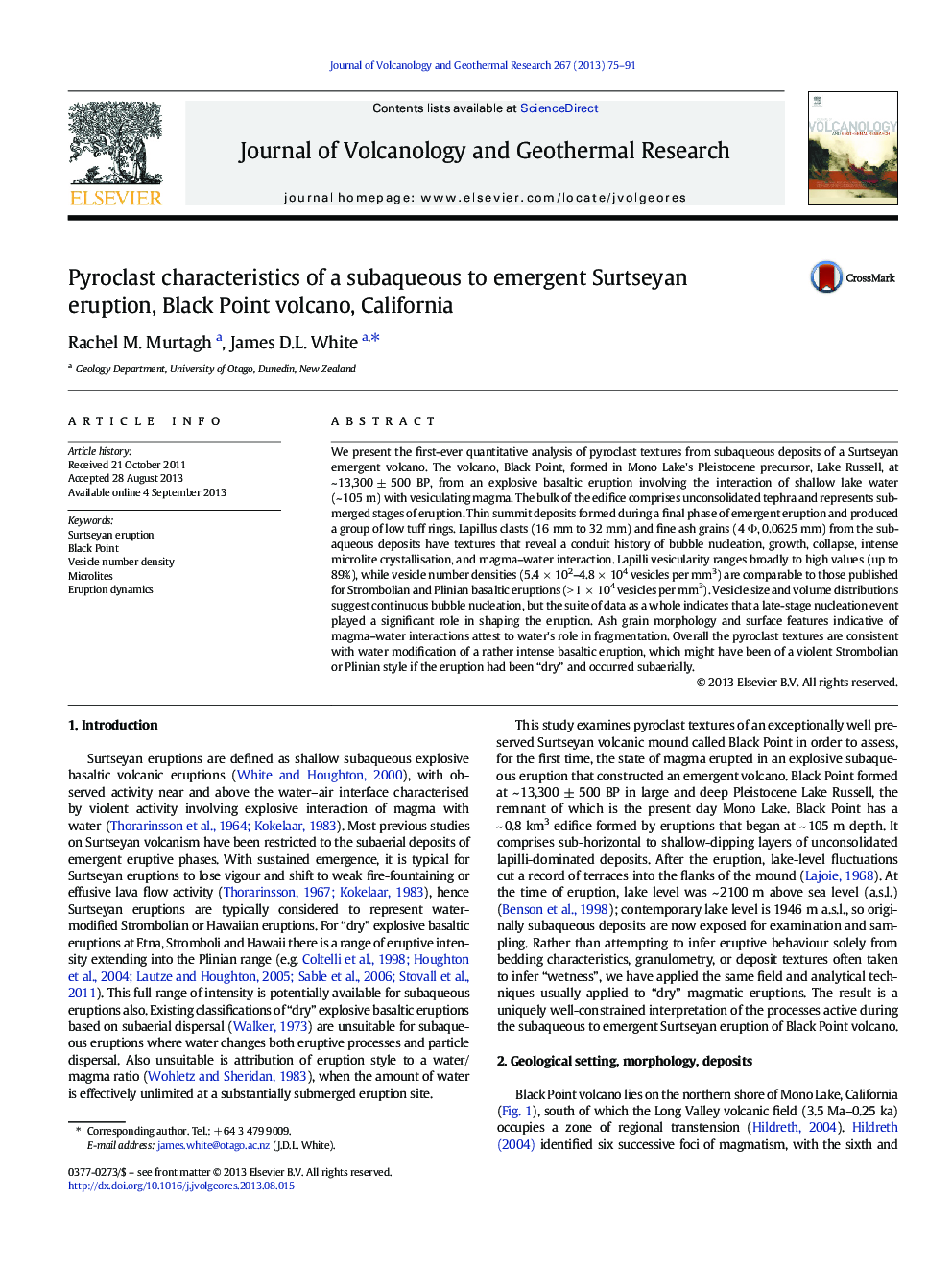| کد مقاله | کد نشریه | سال انتشار | مقاله انگلیسی | نسخه تمام متن |
|---|---|---|---|---|
| 4713306 | 1638354 | 2013 | 17 صفحه PDF | دانلود رایگان |

• Lapilli vesicularity have broad ranges & can achieve high values, up to 89%.
• Vesicle number densities (5.4 × 102–4.8 × 104 vesicles per mm3) are surprisingly high.
• Vesicle size & volume distributions indicate the occurrence of a late-stage event.
• Ash grain morphology & surface features attest to water's role in fragmentation.
• Eruption style is consistent with water modification of an intense basaltic eruption.
We present the first-ever quantitative analysis of pyroclast textures from subaqueous deposits of a Surtseyan emergent volcano. The volcano, Black Point, formed in Mono Lake's Pleistocene precursor, Lake Russell, at ~ 13,300 ± 500 BP, from an explosive basaltic eruption involving the interaction of shallow lake water (~ 105 m) with vesiculating magma. The bulk of the edifice comprises unconsolidated tephra and represents submerged stages of eruption. Thin summit deposits formed during a final phase of emergent eruption and produced a group of low tuff rings. Lapillus clasts (16 mm to 32 mm) and fine ash grains (4 Φ, 0.0625 mm) from the subaqueous deposits have textures that reveal a conduit history of bubble nucleation, growth, collapse, intense microlite crystallisation, and magma–water interaction. Lapilli vesicularity ranges broadly to high values (up to 89%), while vesicle number densities (5.4 × 102–4.8 × 104 vesicles per mm3) are comparable to those published for Strombolian and Plinian basaltic eruptions (> 1 × 104 vesicles per mm3). Vesicle size and volume distributions suggest continuous bubble nucleation, but the suite of data as a whole indicates that a late-stage nucleation event played a significant role in shaping the eruption. Ash grain morphology and surface features indicative of magma–water interactions attest to water's role in fragmentation. Overall the pyroclast textures are consistent with water modification of a rather intense basaltic eruption, which might have been of a violent Strombolian or Plinian style if the eruption had been “dry” and occurred subaerially.
Journal: Journal of Volcanology and Geothermal Research - Volume 267, 1 November 2013, Pages 75–91